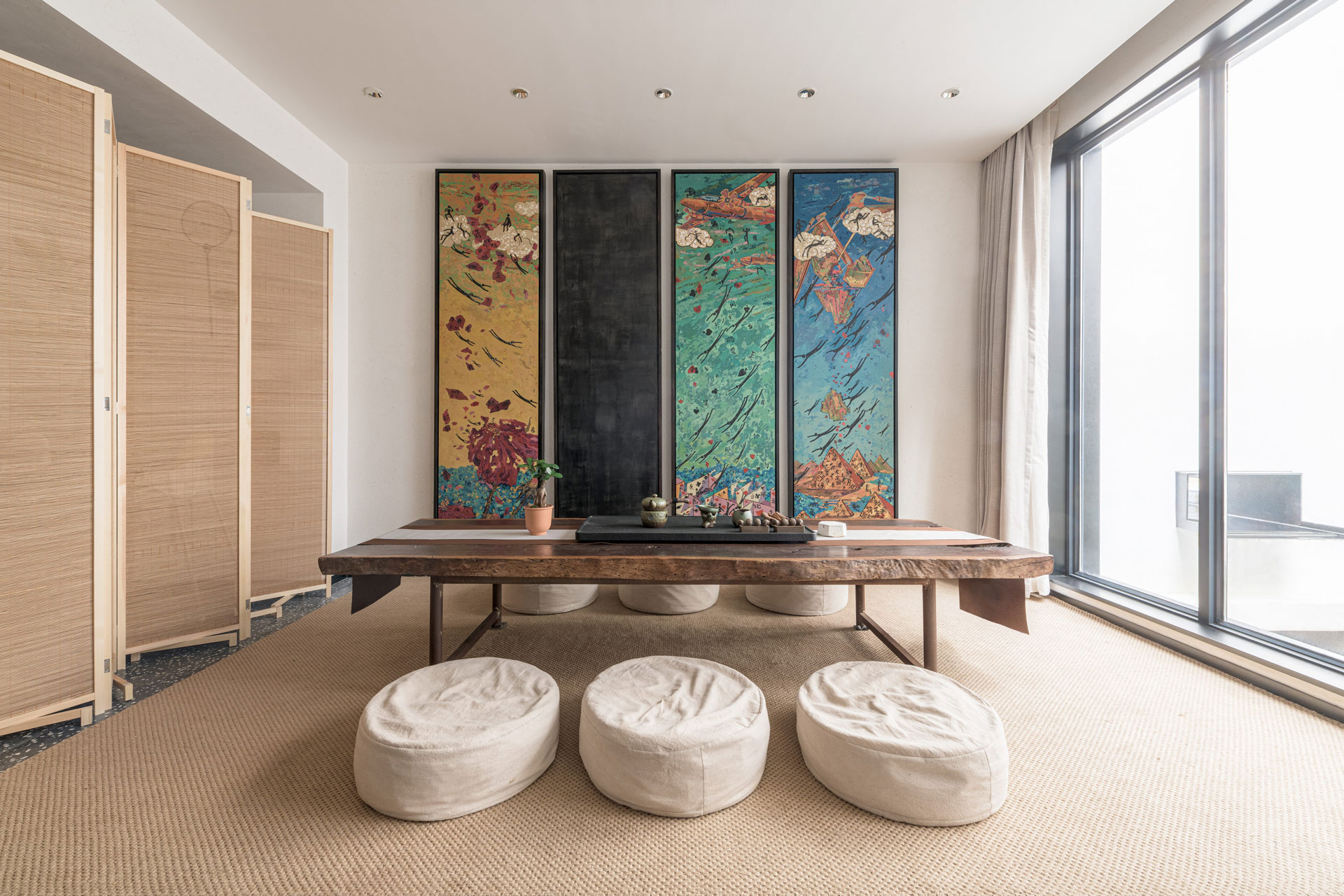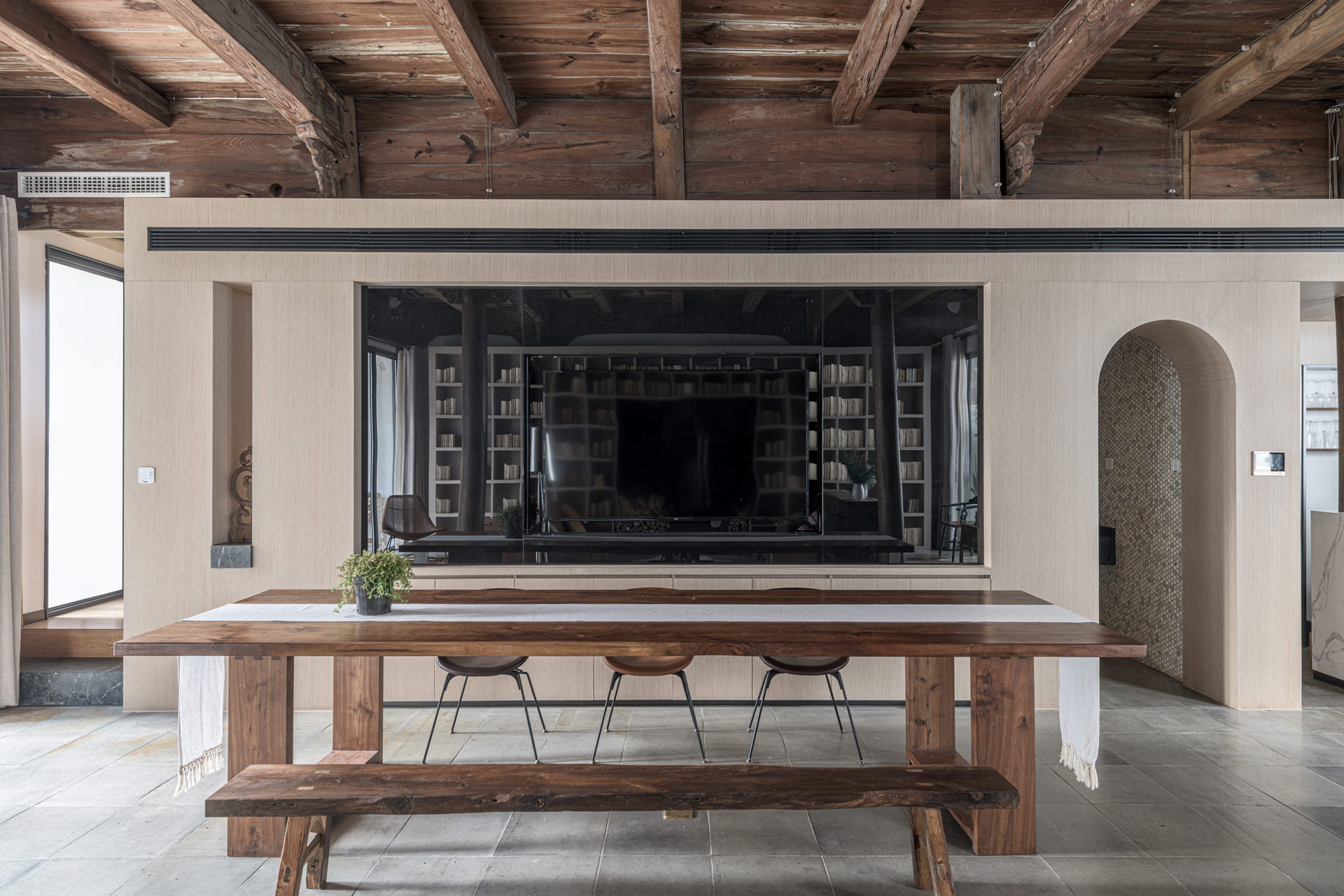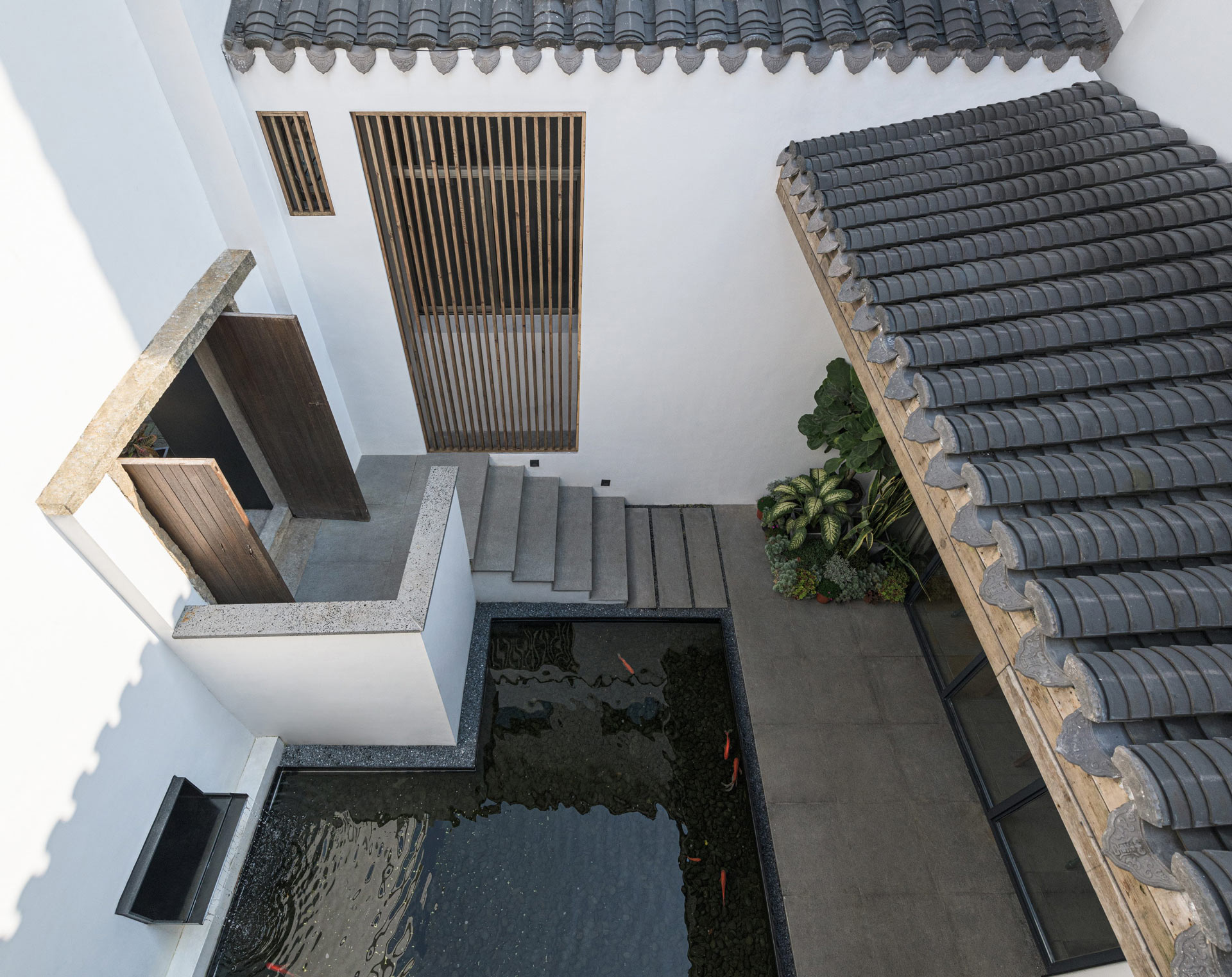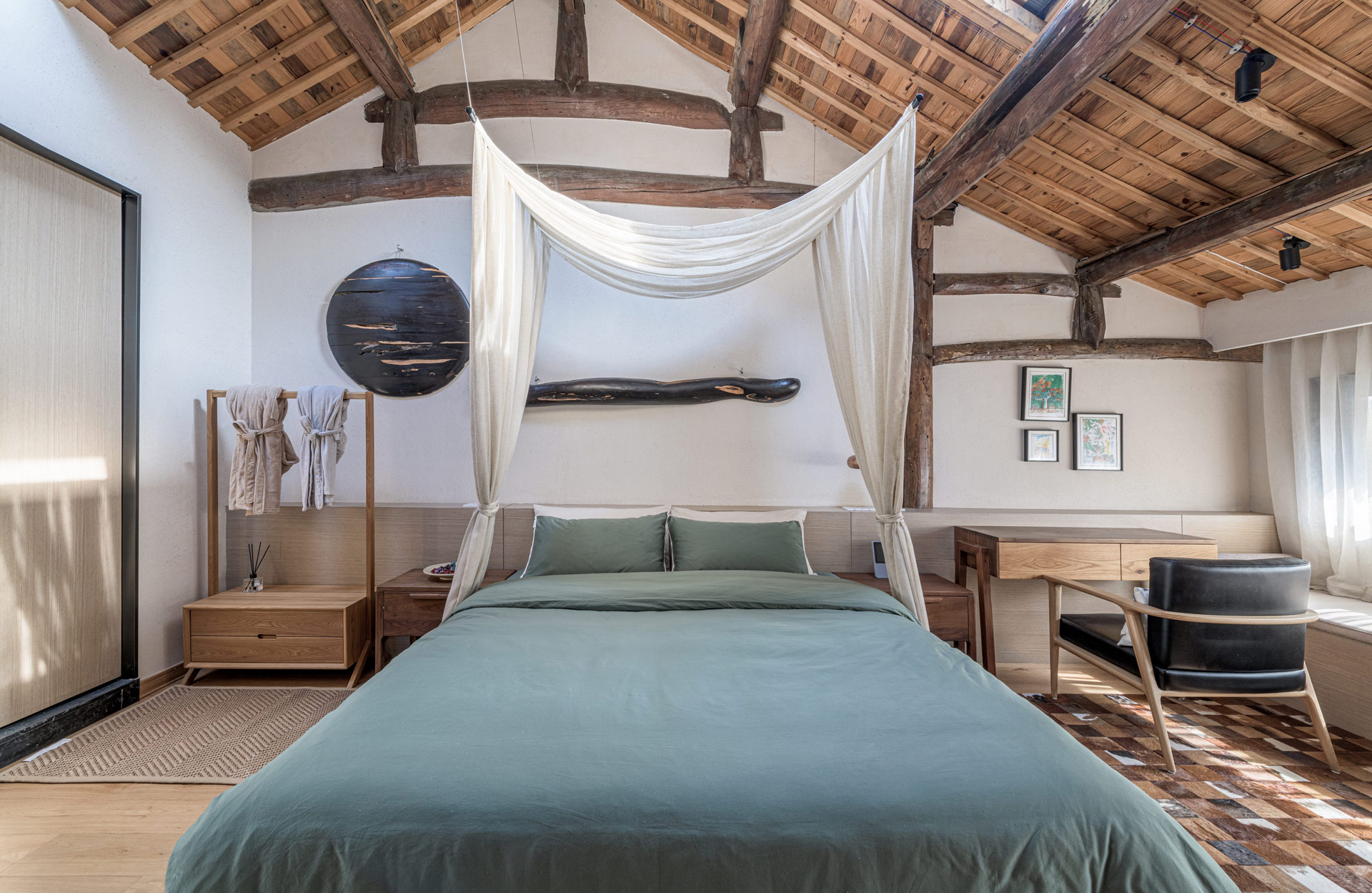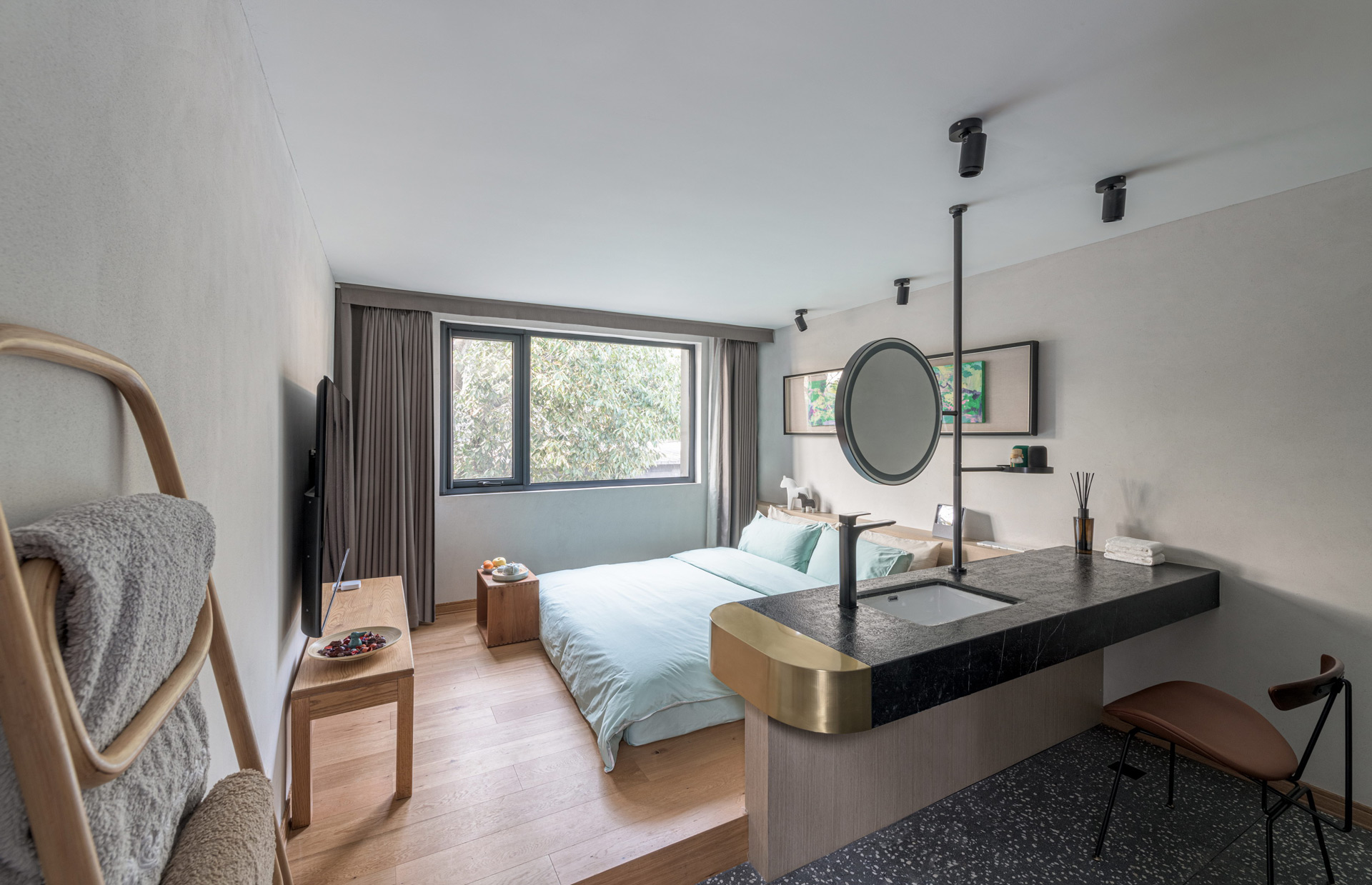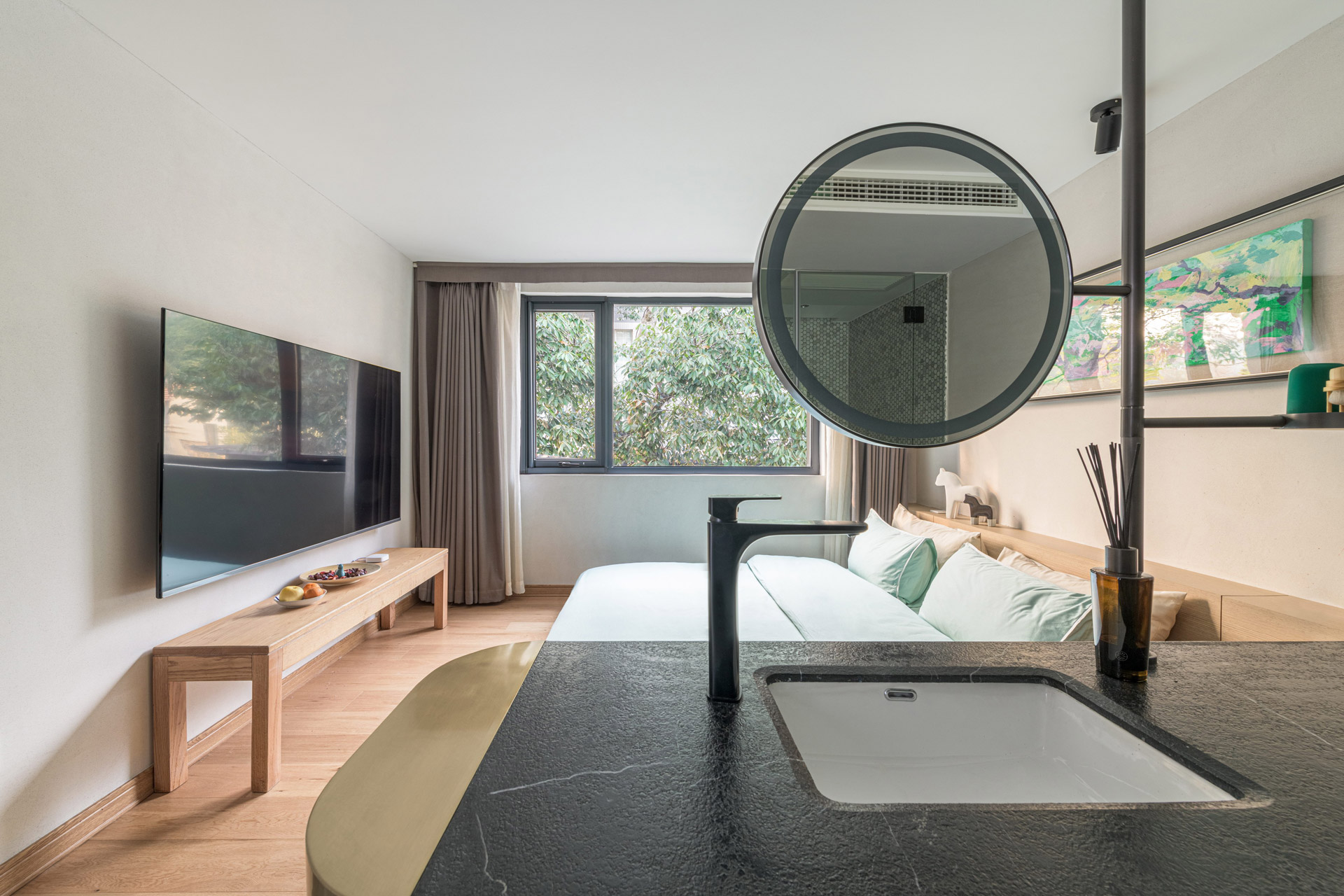Completion Year: 2019
Location: Hangzhou
Completion Year: 2019
Location: Hangzhou
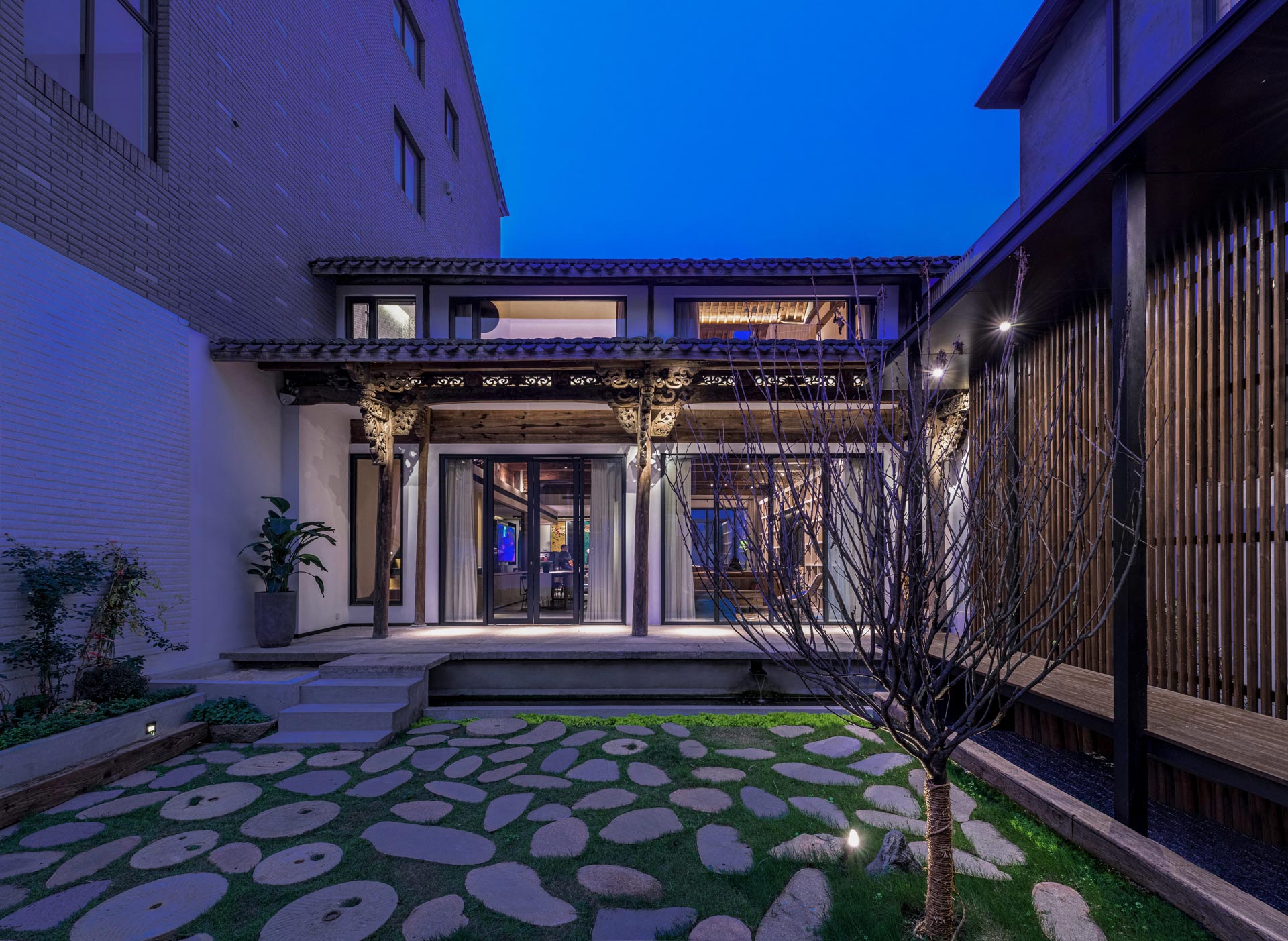
三禾別院,百年老宅
Sanhe Villa, Century-Old Mansion
藝術聚落「畫外桐塢」位於杭州市郊,鄰近西湖畔,是座迄今1300年歷史的鄉間集村。群山與原始林相環繞,雲煙裊裊的環境,古意中隱含著寧靜的風情。設計基地為具有近200年歷史的傳統南方木構式合院,3名年輕人在偶然機緣下發現這幢老屋,傾頹的建築原已準備拆除重建成新式當代樓房,尚存的中式木質柱樑以榫卯搭接,雅緻非凡的雕刻細節,處處展現時光流淌下的鑑古悠情。本著對傳統建築文化的熱愛與情懷,一股與生俱來的使命感讓我們決定攜手合作,拿出個人積蓄,以15年的時間承接下這棟建物,並結合三人各自的專業-品牌運營、設計、工程,藉由不同領域的聯合、碰撞,耗費大量精力將頹圮建築保留維護、改造為老屋社區文化交流基地,網紅、背包客、社區居民齊聚,讓建築透過跨領域對話重獲新生。
The countryside arts village of “Huawaitongwu,” founded 1300 years ago, is located on the outskirt of Hangzhou City, right next to Xihu. Surrounded by mountains, forests and clouds, it is a poetic place with the richness of the historical and cultural heritage. The site, the 200-year old traditional timber-structured cottage, is a typical southern Chinese architecture style. Three young men accidentally discovered this antiquated cottage and decided to refurbish the originally-to-be-demolished building into the modern housing, as well as to preserve the traditional Chinese joint-connection detailing and extraordinary sculptural elements, in accentuating the much-treasured heritage. With our passion and dedication for traditional architectural culture, the design team decided to purchase the cottage with their own savings, spent 15 years to take the project, and collaborated with three young men’s expertise in brand management, design, and construction; respectively, it takes enormous efforts to preserve the decayed remnant by converting it into the base of community culture exchange for gathering backpackers, influences, and neighbors. “Sanhe Villa,” a regenerated architectural work was stemmed from cross-discipline collaboration.
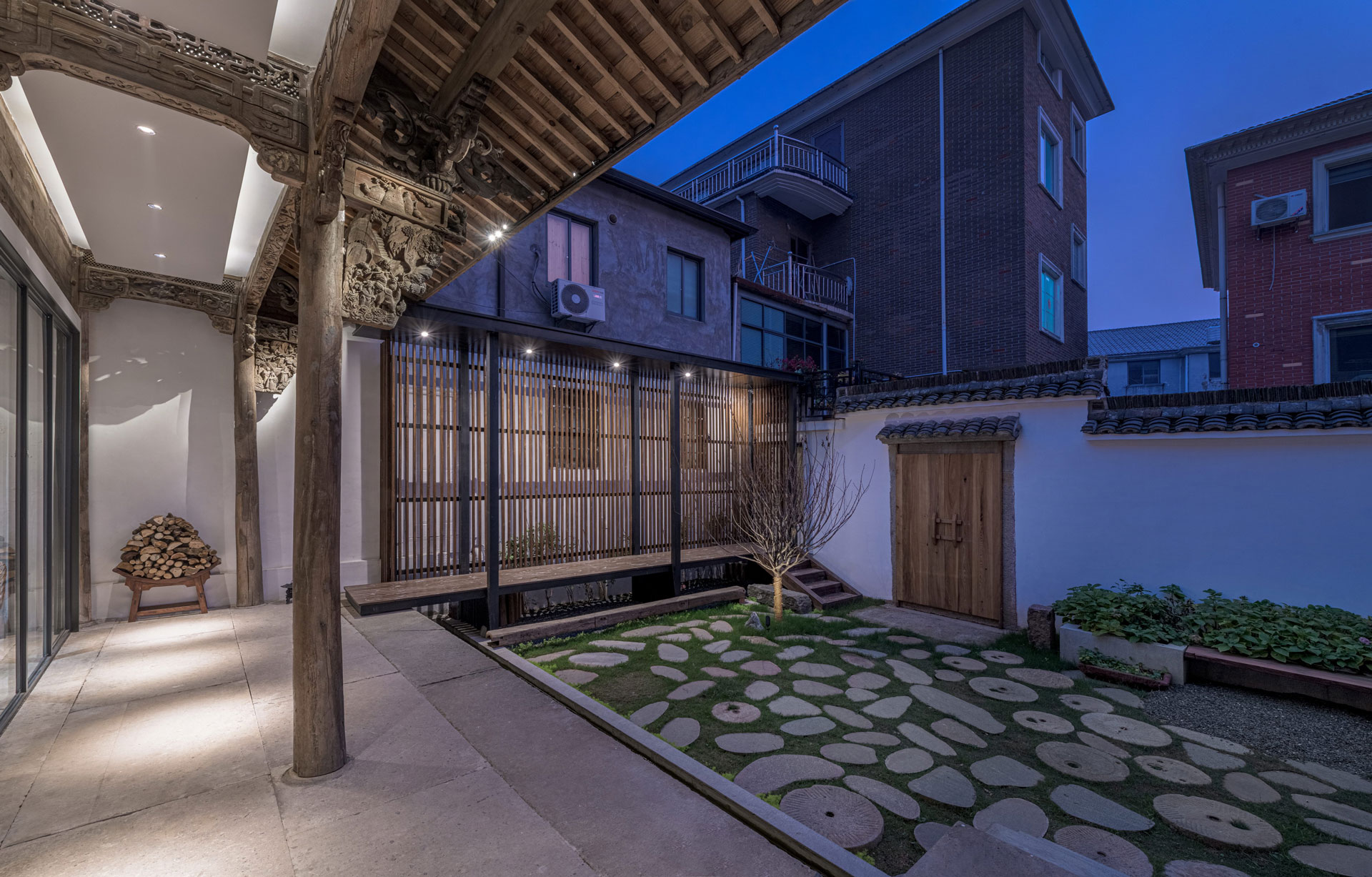
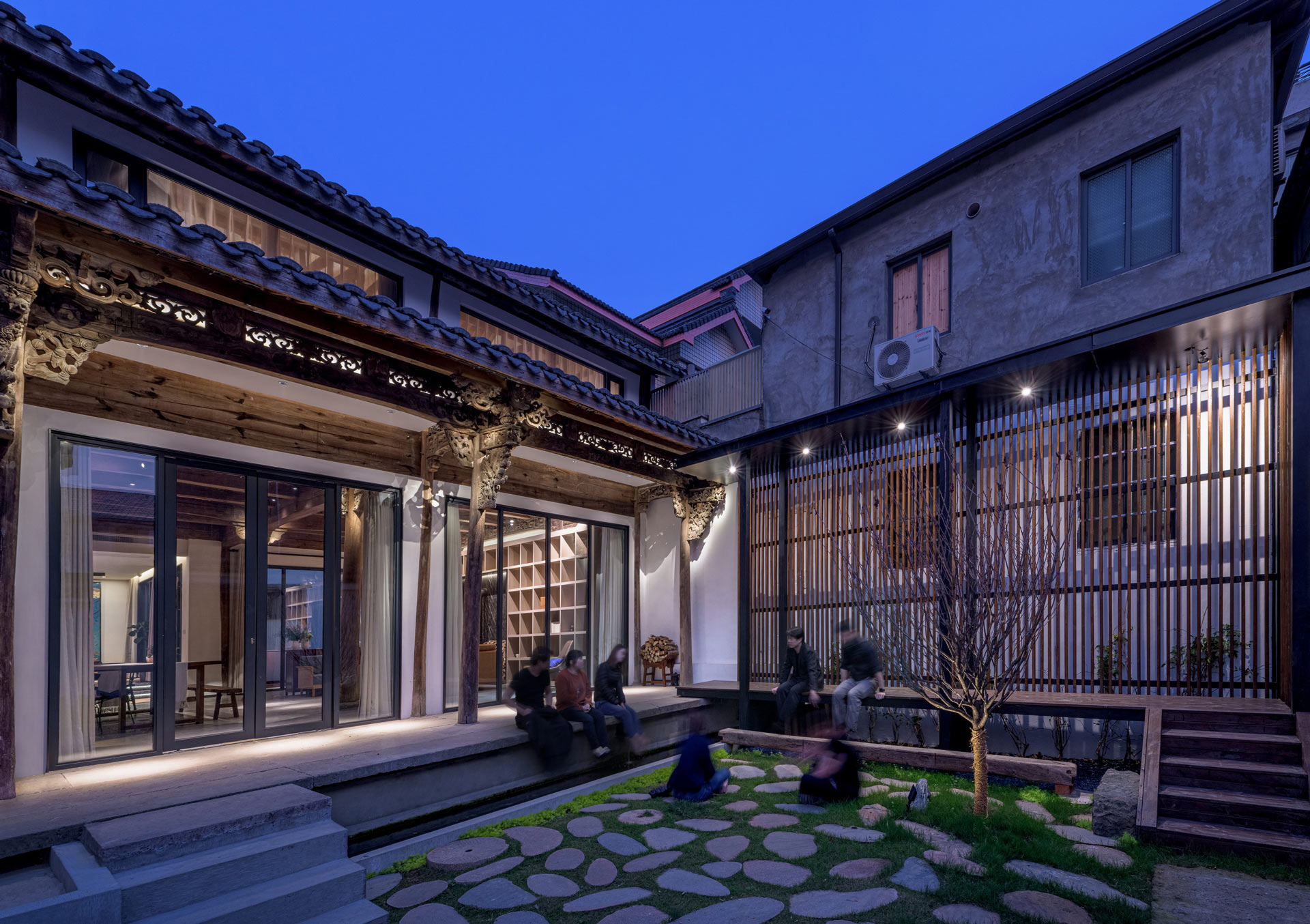
新建築就是好建築?
New Architecture Would be Great Architecture?
現今「畫外桐塢」內,多數住房建物已改建為現代西化風格的洋房,以符合便利生活與空間使用需求,但這些大量興築的新建築,外型大多缺乏美感品味與文化底蘊,建築與建築間不存在關係的鏈結,令村落舊時的古樸風韻盡失。作為聚落內僅存的老屋,我們以一道大型白色牆面為中介設置於社區中央,以留白、簡約的形式橫亙在新舊建築之間,企圖統一兩者完全迥異的空間場域氛圍。隱身在白牆之後的老屋基地,一方面保留既有結構系統、牆面裝飾與構築型態,同時也植入部分新材料、新工法,藉此保留既有建築形制並傳承古屋風韻。經過改造後的《三禾別院》,現已成為地區重要的文化活動場所,吸引許多產官學者與普羅大眾前往學習參訪,從中獲得啟發,進一步思索文化傳承的重要性。
Within the current “Huawaitongwu” village, most of the structures have been converted to western-style buildings to meet the demand for convenience and spatial usage in modern living; however, these mass-produced housing often lack in aesthetics taste, cultural undertone, and connections between buildings, which culminates in the loss of the artistic aura of the yesteryears. As the only remaining old building in the area, the design team places a large white wall in the center of the community traversing in a void and minimalist form amongst old and new buildings, aimed at unifying the contrasting spatial ambiances of the past and the present. The site of the old cottage behind the white wall preserves the existing structural system, wall decoration, overall tectonic form, and incorporation of new materials and techniques in order to maintain the current architectural form of the past dwellings. The renovated “Sanhe Villa” has become a significant cultural center in the area. It attracts people from the industry, the government, and academic fields to visit and reflect on the importance of cultural heritage.
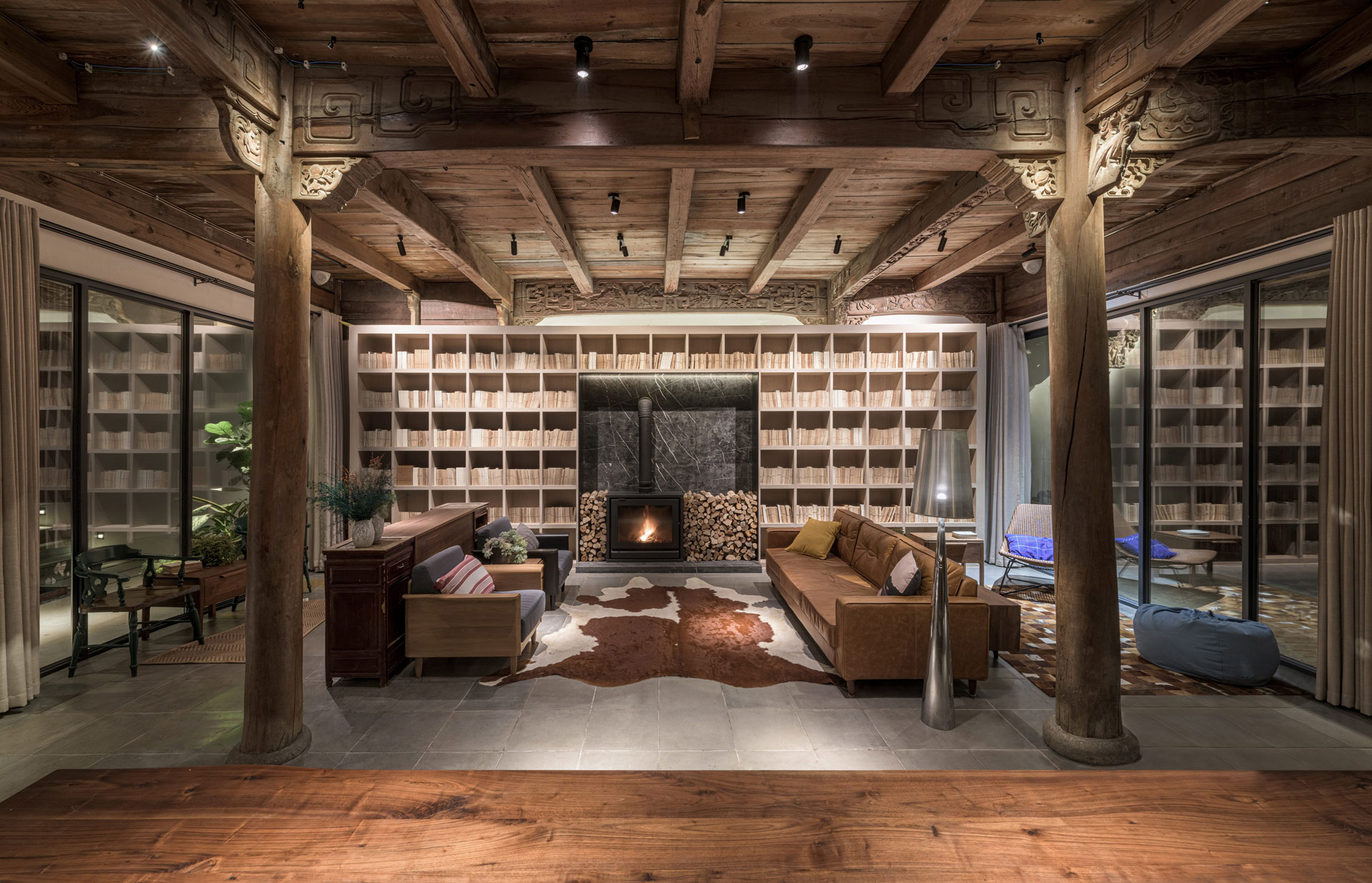
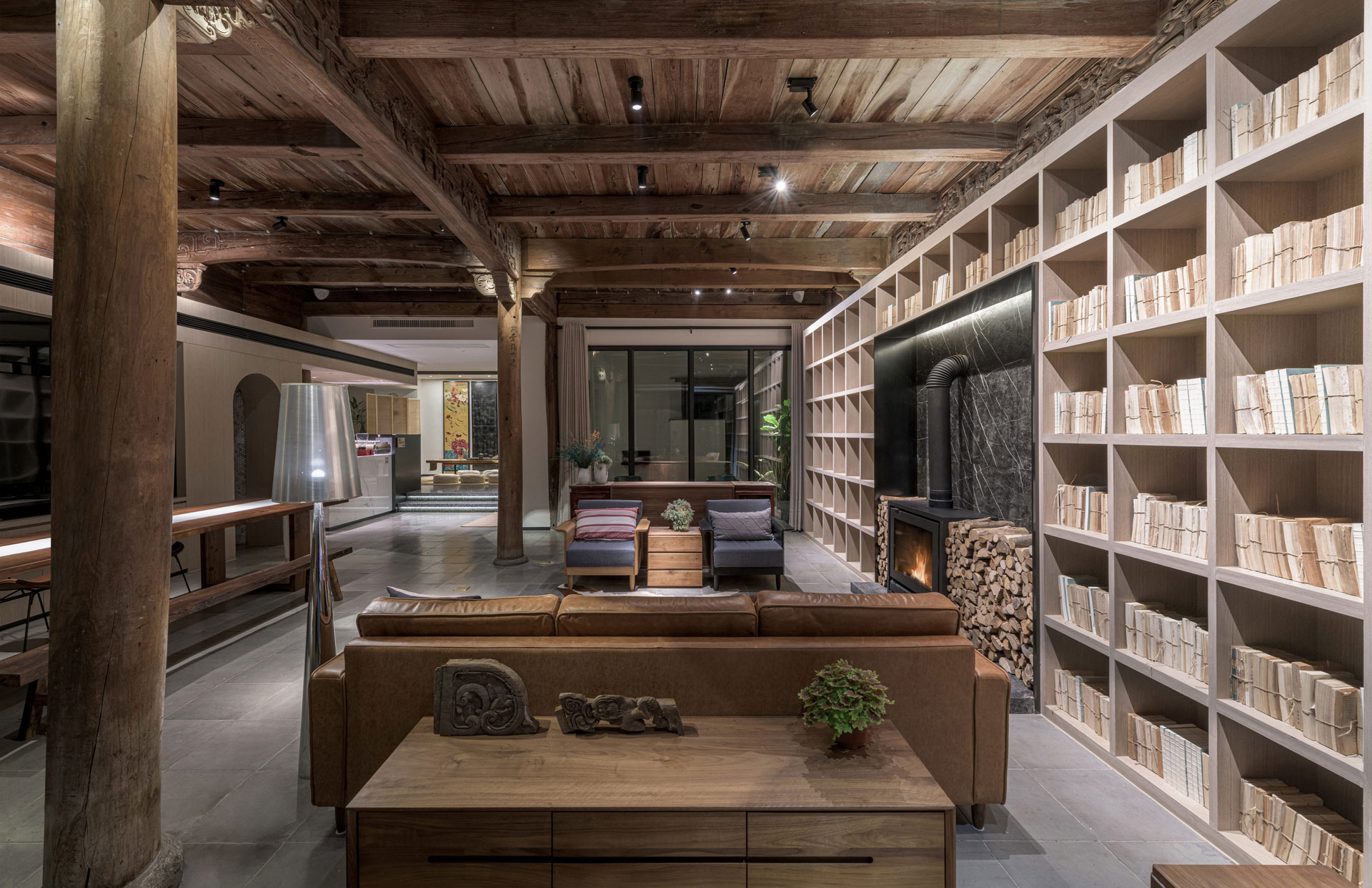
多元碰觸,文化運營
Diverse Exchanges & Cultural Sustenance
在空間設計上,《三禾別院》採取大量營造虛空間(如廣場和天井空間)與社交平台(如工作坊和開放廚房)的創作手法,並在這些區域舉辦畫展、書展、曬書節、交換在地創意料理等藝文活動,成功引發社會關注「畫外桐塢」村落的過去、現在、未來。為保有傳統民居的合院形制,我們維持《三禾別院》僅有三間套房的空間佈局,結合特別設計的大量平台場域以促進人際互動。使用者可以選擇只使用單一斗室,抑或是在完整的合院內交流,包含花木扶疏的前後院、二樓露台與黑瓦斜屋頂等,平台設計的植入與傳統建築結構碰撞,以多元視角產生空間對話,新舊交接的設計處理手法,讓身處其中的人們不只是功能性的體驗,而以多樣化角度感知空間的深層厚度與紋理脈絡。
In terms of spatial design, “Sanhe Villa” adopts many creative techniques such as the creation of void spaces (e.g., open square and atrium areas), and social platforms (e.g., atelier studio and open kitchen). Regional art events (e.g., painting and calligraphy work exhibitions, book fairs, and local culinary creative shows) were held to bring public attention toward the past, present, and the future of the “Huawaitongwu” village successfully. In order to preserve the inner courtyard of the traditional residences, the design team seeks to maintain the spatial composition of the three remaining suites of the “Sanhe Villa”, and incorporates the specially designed platform domains to optimize interpersonal interactions. The inhabitants can choose to spend time in either a single room or to interact with others in the inner courtyard which include the front and back landscaped areas, the balcony on the second floor, and the black-tiled pitched roof, etc. The embedded platform is designed to connect with the conventional architectural structure in order to create a spatial dialogue. While the design treatment of how the past and the present intersect with each other, it allows the visitors not merely to experience the accommodation (functionality) but to be subject to diverse perceptual experience in the spatial depth and texture.
